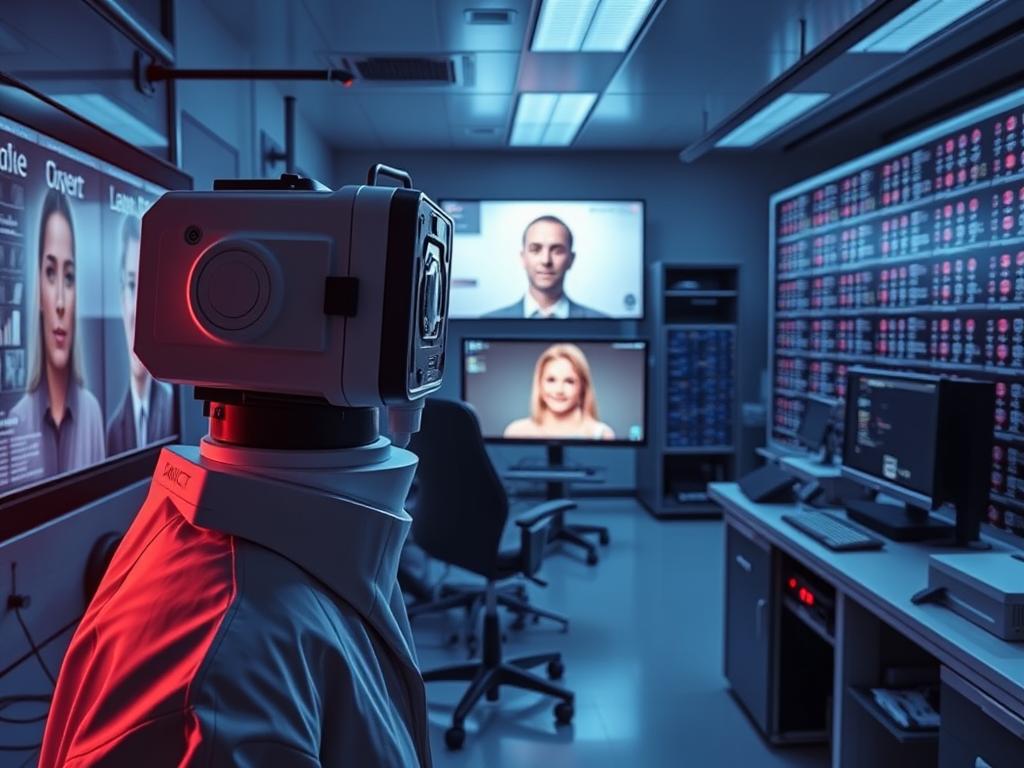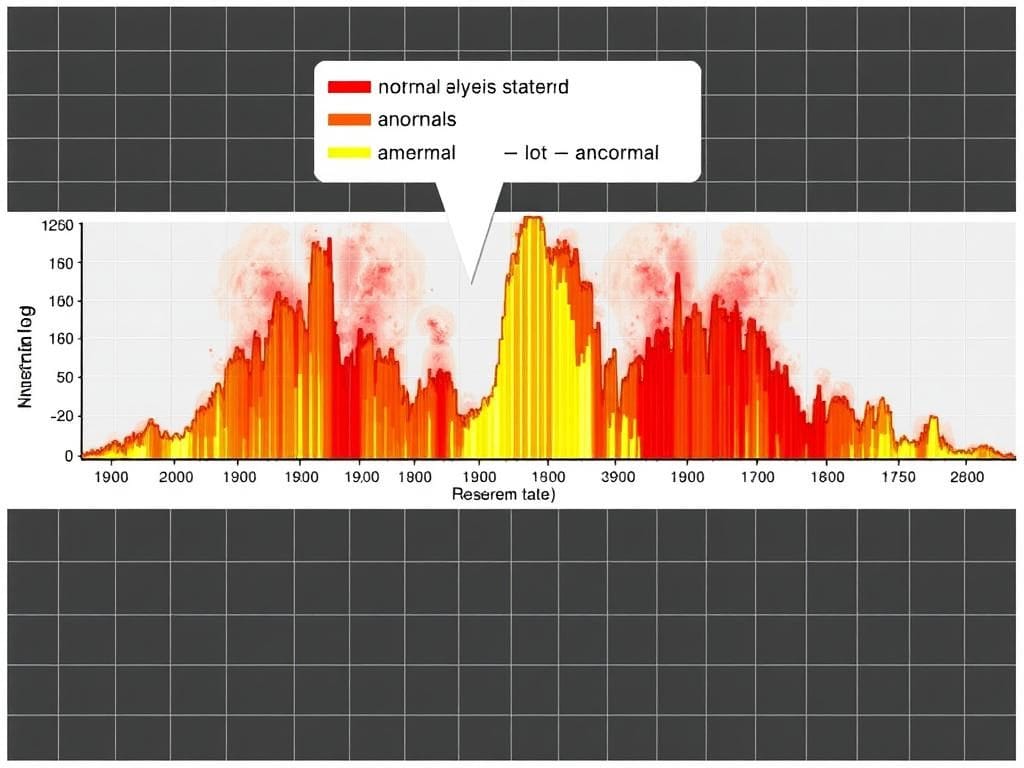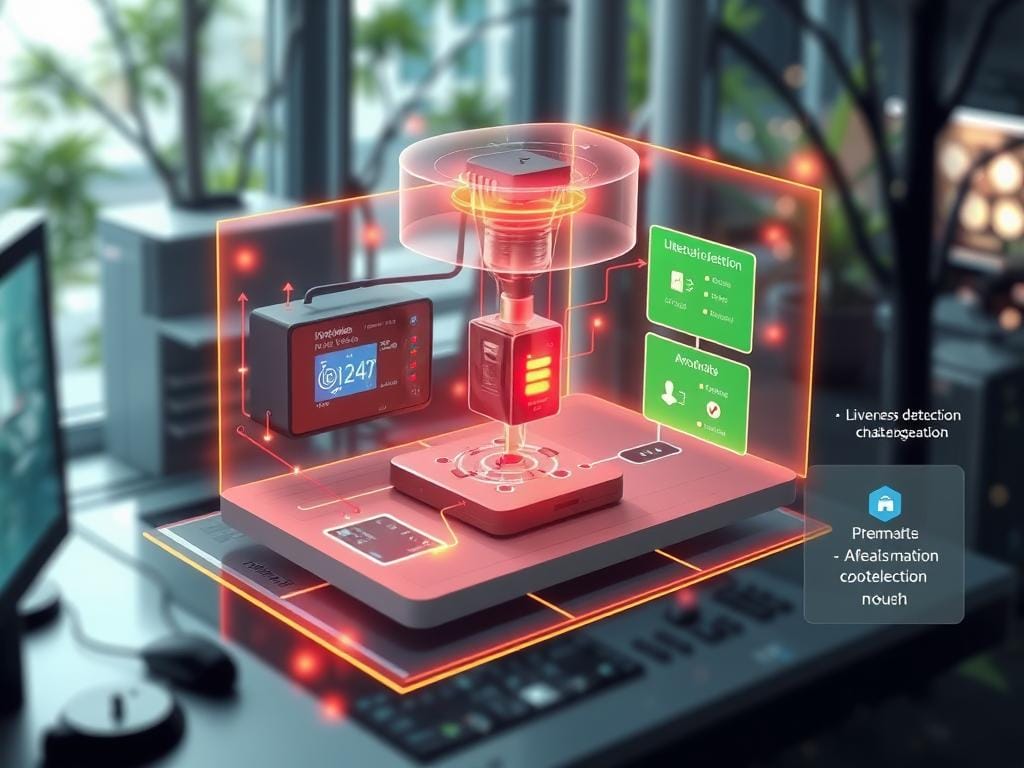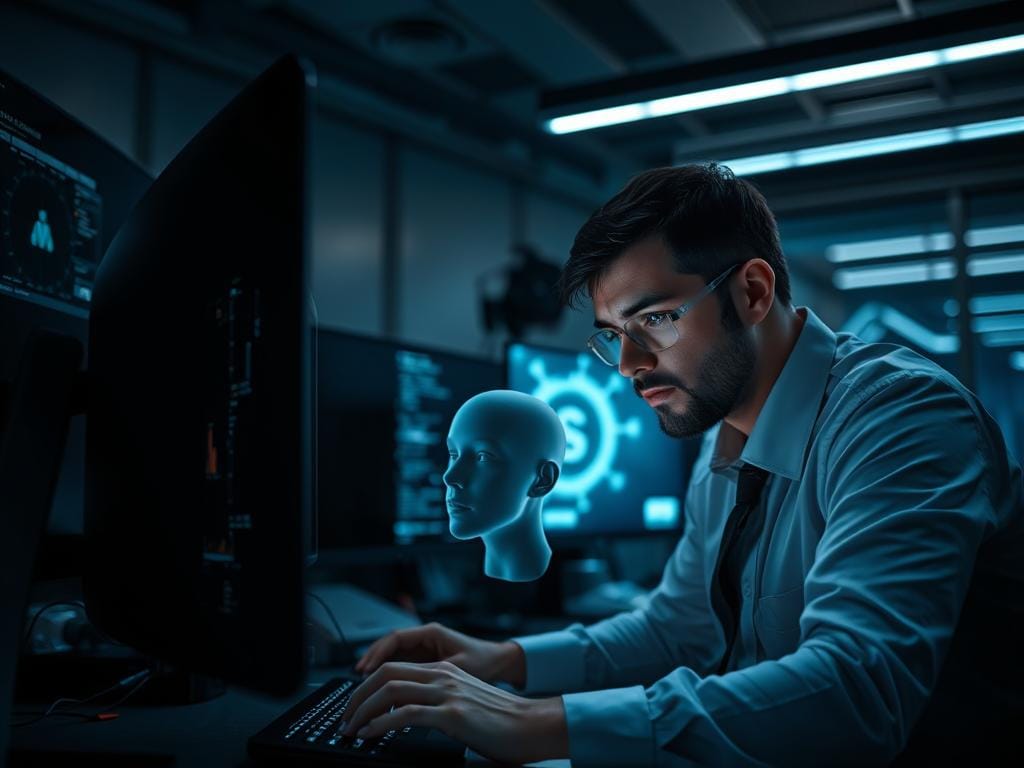Recently, I found out that over 15,000 deepfakes have been found online in just one year. Many of these are used for fraud and trickery. This shows how important it is to find ways to spot these fakes and keep our online selves safe.
Deepfakes are made with advanced neural networks and deep learning technology. This makes it hard to tell real from fake media. So, our personal identity and information are at a higher risk than ever.
To fight this, we need to know the dangers of highly realistic AI fakes. We also need to learn how to spot them. In this guide, I’ll share the main technologies and methods for finding and stopping deepfakes. This will help you stay safe in a world where AI is getting smarter.
The Growing Threat of Deepfakes
Deepfakes are getting better and more dangerous. I’ve seen more cases of deepfake problems, which worries both people and companies a lot.
What Are Deepfakes and How They’re Created
Deepfakes are fake content made to look and sound like real people. They use advanced AI to trick us. This tech is being used for bad things, like identity theft and reputation damage.
Why Deepfakes Pose a Serious Risk
Deepfakes are a big threat to our security and information safety. They can trick us in ways that old security measures can’t stop. The chance for fraud and manipulation is huge, so we must be able to spot them.
Deepfakes can hurt our reputation, mess with politics, and make us doubt digital media. As they get more common, we need better ways to find and stop them.
Understanding Deepfake Detection
Knowing how to spot deepfakes is key in our digital world. Deepfake detection tools are important in the battle against fake AI content.
Basic Principles Behind Identifying Fake Content
Deepfake detection uses machine learning (ML) to find fake content. These algorithms are trained on lots of real and fake media. They learn to spot the tiny differences, helping us catch fakes.
The Role of AI in Combating Synthetic Media
AI is key in fighting deepfakes by making detection faster and better. It uses convolutional neural networks and recurrent neural networks to spot real from fake media.
| Detection Method | Description | Effectiveness |
|---|---|---|
| Machine Learning | Trained on vast datasets to identify subtle differences | High |
| Convolutional Neural Networks | Recognize patterns in visual data | Very High |
| Recurrent Neural Networks | Analyze sequential data for inconsistencies | High |

A digital forensics lab shines with a cool glow. In the front, a Snapcee Digital facial recognition system checks a video for signs of tampering. The room is filled with tools and displays showing deepfake detection data in real-time.
In the back, a huge database of deepfakes waits to be checked. This ensures accurate results. The scene shows dedication, professionalism, and a quest for truth.
Visual Clues That Reveal Deepfakes
Looking closely at visual patterns and oddities can expose deepfakes. When checking a video or image, watch for signs of tampering.
Facial Inconsistencies to Watch For
Facial oddities are a big giveaway of deepfakes. Look for mismatched features, unnatural eye movements, and skin tone issues.
Unnatural Movements and Expressions
Deepfakes often can’t mimic human movements well. Watch for stiff or jerky actions and exaggerated expressions.
Lighting and Background Discrepancies
Lighting and background issues can also hint at deepfakes. Check for wrong shadows, reflections, and background elements that don’t fit.
By focusing on these clues, you can better spot manipulated media.
Advanced Deepfake Detection Technologies
Advanced tech is key in fighting deepfakes. As they get smarter, we need better ways to find and flag them.
Spectral Artifact Analysis Tools
Spectral tools look for anomalies in frequency, hinting at deepfakes. They check media’s spectral traits for oddities not seen by the eye.

Liveness Detection Systems
Liveness detection systems check if a video or audio is from a real person or a fake. They ask the person to do something like blink or say a random word. This helps spot fake videos.

Behavioural Analysis Methods
Behavioural analysis looks at how someone moves, talks, and interacts. It checks for patterns in typing, mouse use, and device interaction. Voice analysis also looks for unique patterns in speech.
Device info and usage history also help detect deepfakes. These methods work best for ongoing interactions, not just static content.
How I Verify Suspicious Content
When I find suspicious content, I check it carefully. This is important today because deepfakes can look very real.
Authentication Process
I first look for signs of tampering, like odd lighting or movements. My step-by-step authentication process looks for these clues to spot deepfakes.
- I analyze facial expressions and body language for any inconsistencies.
- I check for unnatural movements or blinking patterns.
- I examine the lighting and background for any discrepancies.
Cross-Referencing Information Sources
To confirm content authenticity, I check different sources. I look for the original content and compare it to the possibly altered version. I use trusted news sources and fact-checking sites to check information consistency.

A dimly lit office space, where a Snapcee Digital analyst meticulously examines a computer screen. The foreground showcases an array of visual cues and data analytics tools, hinting at the intricate process of deepfake detection. In the middle ground, a 3D model of a human face rotates, as the analyst scrutinizes it for anomalies. The background features a sleek, high-tech environment, with monitors and digital displays casting a futuristic glow. The scene conveys a sense of focused intensity, as the Snapcee Digital team works to uncover the truth behind suspected deepfake content.
I also think about the content’s history and if it makes sense. By looking at everything, I can tell if content is real or a deepfake.
Protecting Myself from Deepfake Attacks
Keeping my identity safe from deepfakes needs awareness and technology. As deepfakes get better, I must stay safe with strong security.
Implementing Personal Security Measures
I use BioID’s Deepfake Detection software to spot AI-generated content. I also use their patented challenge-response mechanism since 2004. This adds security against video injections with deepfakes.
To boost my security, I use blacklisting and native apps for sensitive transactions. Liveness detection is key to verify interactions’ authenticity.
What to Do If I Encounter a Suspected Deepfake
If I find content that looks like a deepfake, I have a plan. First, I document the suspicious content well. Then, I report it to the right places or authorities.
| Action | Purpose |
|---|---|
| Document the content | Gather evidence |
| Report to authorities | Prevent further fraud |
| Use verification tools | Confirm suspicions |
I also warn others who might be targeted without sharing the content. By using liveness detection systems and other tools, I can check my suspicions before acting.
Conclusion
Dealing with deepfakes is a big challenge that needs many steps. This guide has shown how to spot AI fakes, from visual signs to advanced tech. By using tech and staying alert, we can fight deepfake threats better.
It’s important to keep watching out and learn more about deepfake detection. As deepfake technology gets better, so must our detection skills. I encourage everyone to follow these steps and share this info to protect our community from deepfake fraud.
Together, we can get better at liveness detection and stay safe from threats.



